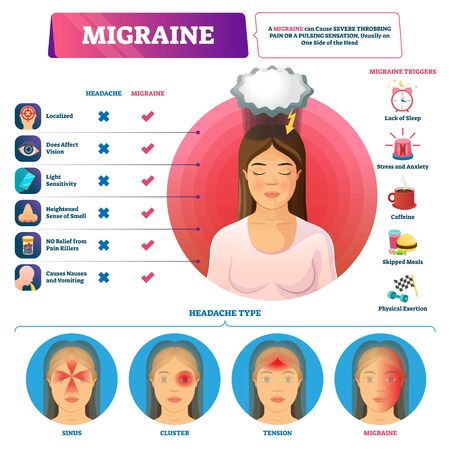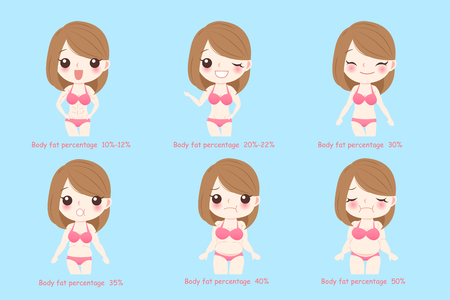Understanding PRP Therapy: What Is It?
If you’ve been looking into solutions for thinning hair, you might have come across PRP therapy. But what exactly is it, and why is it gaining popularity in the United States for hair restoration?
What Does PRP Stand For?
PRP stands for Platelet-Rich Plasma. This therapy uses your own blood to help stimulate hair growth. It’s a natural option that many Americans are turning to as an alternative to surgery or medications.
How Does PRP Therapy Work?
The science behind PRP is pretty fascinating but easy to understand. Here’s how it works:
| Step | Description |
|---|---|
| Blood Draw | A small amount of your blood is drawn, similar to a routine blood test. |
| Separation | The blood is spun in a special centrifuge machine to separate out the platelet-rich plasma. |
| Injection | The concentrated PRP is injected into areas of your scalp where hair is thinning. |
The Science Behind PRP
Your blood contains platelets, which are tiny cells packed with growth factors that help tissues heal and regenerate. By concentrating these platelets and injecting them into your scalp, PRP therapy aims to “wake up” dormant hair follicles and encourage new hair growth.
Why Has PRP Become Popular for Hair Restoration?
Originally used in sports medicine and orthopedics to help athletes heal faster, PRP therapy has evolved over the years. In recent times, doctors and medical aesthetic experts in the U.S. have adapted it for cosmetic procedures—including skin rejuvenation and, more recently, hair restoration. Its appeal comes from using your body’s own natural healing ability without chemicals or surgery.
2. Why Choose PRP for Hair Thinning?
Across the United States, more and more people are looking for effective, safe ways to address hair thinning and hair loss. PRP therapy—short for Platelet-Rich Plasma therapy—has emerged as a popular solution for those hoping to restore their hair’s natural volume without surgery or harsh chemicals. But what makes PRP stand out? Let’s break down the main reasons Americans are turning to this innovative treatment.
Minimally Invasive Approach
One of the biggest draws of PRP therapy is that it’s minimally invasive. Unlike surgical hair transplants, PRP uses your body’s own blood, which is spun in a special machine to separate out the platelets. These platelets are then injected into your scalp where hair is thinning. Most patients experience little to no downtime, making it convenient even for those with busy schedules.
Excellent Safety Profile
Since PRP treatments use your own blood, there is a very low risk of allergic reactions or complications. Many Americans appreciate this natural approach, especially if they’re concerned about side effects from medications or synthetic products.
PRP vs. Other Hair Loss Treatments
| Treatment Type | Invasiveness | Main Ingredients | Downtime | Risk of Allergic Reaction |
|---|---|---|---|---|
| PRP Therapy | Minimally Invasive (injections) | Your Own Platelets | Minimal | Very Low |
| Surgical Transplant | Surgical/Highly Invasive | Donor Hair Follicles | Several Days to Weeks | Moderate |
| Topical Medications (e.g., Minoxidil) | Non-invasive (topical) | Chemical Compounds | None | Possible Skin Irritation |
| Pills (e.g., Finasteride) | Non-invasive (oral) | Synthetic Medication | None | Possible Systemic Side Effects |
Growing Popularity and Acceptance in the U.S.
The demand for PRP therapy has been rising steadily across American cities and suburbs alike. More clinics are offering this service, and many celebrities and influencers have shared their positive experiences online, making PRP more mainstream than ever. Its reputation as a modern, science-backed option appeals to people seeking results without drastic measures.
Main Reasons Americans Are Choosing PRP:
- No surgery required—just simple injections using your own blood.
- Low risk of side effects or allergic reactions.
- Lifestyle-friendly with little to no recovery time needed.
- A natural approach that fits with holistic health trends.
- An increasing number of positive reviews and success stories in the media.

3. The PRP Procedure: What to Expect
Step-by-Step Guide to a Typical PRP Hair Treatment
If you’re considering PRP therapy for hair thinning, knowing what happens during the treatment can help ease any nerves. Here’s a straightforward look at what you can expect when you go in for a PRP session in the U.S.
Before the Procedure: Getting Ready
- Consultation: Your provider will review your medical history and examine your scalp to make sure PRP is a good option for you.
- No Harsh Products: You’ll likely be asked to avoid hair products, such as sprays or gels, on the day of your appointment.
- Avoid Certain Medications: Some doctors may advise pausing medications or supplements that thin your blood, but always check with your provider first.
- Eat and Hydrate: Have a light meal and drink water beforehand since blood will be drawn during the session.
The Day of Your PRP Session
| Step | What Happens | How It Feels |
|---|---|---|
| 1. Blood Draw | A small amount of blood (usually from your arm) is collected, similar to a routine lab test. | You might feel a quick pinch; most people find this easy. |
| 2. Spinning the Blood | Your blood sample goes into a centrifuge, which spins it rapidly to separate out the platelet-rich plasma (PRP). | You just relax during this step—no discomfort involved. |
| 3. Preparing the Scalp | Your scalp is cleaned, and sometimes a numbing cream or local anesthetic is applied for comfort. | Mild tingling or coolness from the cleanser or numbing cream. |
| 4. PRP Injections | The prepared PRP is injected into areas of thinning hair across your scalp using tiny needles. | Mild stinging or pressure is common; some people describe it as “pinpricks.” The process usually takes about 15–30 minutes. |
During the Session: What Most People Experience
- You’ll be awake the whole time—it’s an outpatient procedure done right in your provider’s office.
- The sensation during injections varies: some people say it’s barely noticeable, while others feel mild discomfort. If you’re worried about pain, ask about numbing options ahead of time.
- You can usually listen to music, scroll on your phone, or chat with your provider to distract yourself during treatment.
Quick Recap: What to Expect from Start to Finish
- A brief check-in and paperwork upon arrival
- A quick blood draw and waiting while it’s processed (about 10–15 minutes)
- Cleansing and prepping your scalp, followed by the PRP injections themselves (15–30 minutes)
- You’re free to go home right after—no downtime required for most people!
4. Potential Results and Limitations
When considering PRP therapy for hair thinning, it’s important to have realistic expectations about what this treatment can achieve. While many patients experience positive results, outcomes can vary based on individual factors like age, genetics, and the underlying cause of hair loss.
What Results Can You Expect?
PRP (Platelet-Rich Plasma) therapy uses your own blood platelets to stimulate hair growth and improve hair thickness. Most people notice:
- Improved Hair Thickness: Many patients report thicker, fuller-looking hair in treated areas.
- Reduced Shedding: Some see less daily hair loss after a few sessions.
- New Hair Growth: In some cases, small new hairs may start to appear, especially where there are still active hair follicles.
Typical Timeline for Visible Results
| Time After First Treatment | What You Might Notice |
|---|---|
| 0-2 Months | Little or no visible change; the process is just beginning |
| 3-4 Months | Less shedding; early signs of increased thickness in some patients |
| 6+ Months | Fuller appearance; maximum results often seen after completing a full series of treatments (typically 3-6 sessions) |
Limitations and Challenges
While PRP is considered safe and minimally invasive, it’s not a miracle cure for every type of hair loss. Here are some important limitations to consider:
- No Guarantee for Every Patient: Not everyone will see dramatic changes. Response depends on overall health, the degree of thinning, and whether active follicles are still present.
- Best for Early-to-Moderate Thinning: PRP works best when started early—if you have advanced baldness or scarring, results may be limited.
- Ongoing Maintenance Needed: To maintain benefits, you’ll likely need follow-up treatments every 6-12 months.
- No Regrowth on Completely Bald Areas: PRP cannot regrow hair where follicles are already dead or scarred over.
- Lack of Standardization: Since PRP protocols can vary from clinic to clinic, results might differ depending on technique and expertise.
Main Takeaways Based on Clinical Evidence
| Aspect | Current Understanding |
|---|---|
| Efficacy | Most effective for mild-to-moderate thinning; mixed results for severe hair loss |
| Speed of Results | Takes several months; gradual improvement over time with multiple sessions needed |
| Long-term Outlook | Sustained results require ongoing maintenance treatments; effects may diminish if treatments are stopped |
| Safety Profile | Generally safe with minimal side effects when performed by trained professionals |
| Candidates Most Likely to Benefit | Younger adults with recent onset of thinning who still have active follicles |
5. Is PRP Right for You?
Before jumping into PRP therapy for hair thinning, it’s important to understand if you’re a good candidate for this treatment. Not everyone will benefit the same way, and several factors come into play. Here’s what you need to know to figure out if PRP could work for you.
Who Makes a Good Candidate for PRP Therapy?
| Ideal Candidates | May Not Be Suitable |
|---|---|
| Men and women with early stages of hair thinning | People with complete baldness (no active hair follicles) |
| Those with androgenic alopecia (male or female pattern hair loss) | Individuals with certain blood disorders or clotting issues |
| People who have experienced recent hair loss (within the past few years) | Anyone with active scalp infections or chronic skin diseases in the treatment area |
| Patients looking for a natural approach using their own blood components | Pregnant or breastfeeding women (usually advised to wait) |
Factors to Consider Before Starting Treatment
- Your Health History: Your overall health and any chronic conditions can affect your eligibility for PRP therapy.
- Type and Stage of Hair Loss: Early intervention usually brings better results. If your hair follicles are already inactive, PRP might not help much.
- Lifestyle and Commitment: PRP is not a one-and-done treatment. It often requires multiple sessions and maintenance visits, so make sure you’re ready to commit.
- Expectations: Results vary from person to person. While many people see thicker, fuller hair, it may not restore your hair completely to its previous volume.
- Budget: Since most insurance plans don’t cover PRP for hair loss, consider the costs involved.
The Importance of Consulting With a Qualified Provider
Talking to an experienced medical provider is key before starting any kind of aesthetic procedure, including PRP therapy. A qualified dermatologist or licensed practitioner will:
- Evaluate your scalp and hair loss pattern
- Review your medical history and current medications
- Discuss realistic expectations based on your unique situation
- Create a personalized treatment plan just for you
Your Next Step: Book a Consultation
If you’re curious whether PRP therapy could be the answer for your thinning hair, reach out to a board-certified dermatologist or a reputable medical spa specializing in hair restoration. They’ll help guide you through your options and set you up for the best possible outcome.


